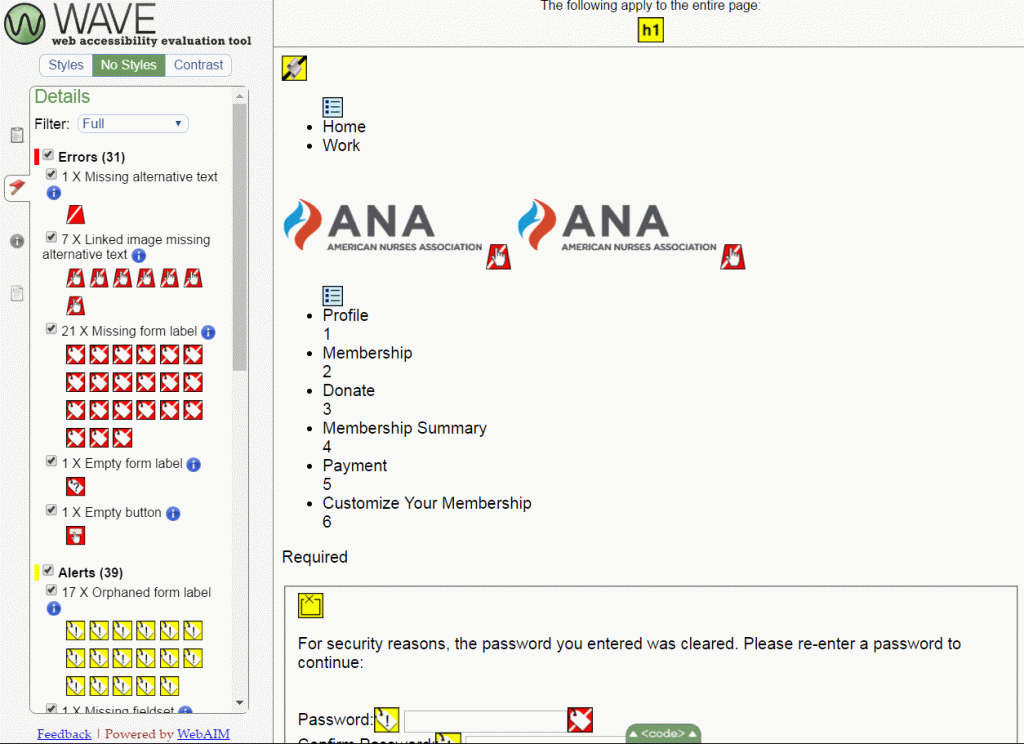
- CHECK ACCESSIBILITY IN WORD BUTTON MISSING HOW TO
- CHECK ACCESSIBILITY IN WORD BUTTON MISSING WINDOWS
After you make your selections, click “ OK” and all text of that style will change to your choices. If you want to do things like indent the left side of the text or change the line spacing, click the “ Format” button at the bottom left of the “Modify Styles” window. In the “Modify Styles” window, you can choose things like font, size, weight, color, and alignment. Or, hover over the style in the Style pane and click the little arrow that appears on the right. Right click (Mac: control click) on the style in the Ribbon. The default heading styles in Word look pretty lame. Change How Styles Look Change the Appearance of Heading Styles A level 4 is a section of a 3, which is a section of a 2, which is a section of a 1.įor most documents, three heading levels will do. You would not have a Heading 4 come directly after Heading 1, for example. In Word, if you change your view to “Outline,” or if you activate the “Navigation” sidebar, you will see your headings nested in a nice little list. 
If you have a subheading within one of these sections, those are heading 3. Next, give each section of the document a meaningful heading. The first thing it needs is a heading that describes the page’s topic. The rectangle below represents your article. Headings within a level 2 section will have Heading 3 styles. The headings of sections within the document will have Heading 2 styles. Usually, the topic heading at the top of your page will be Heading 1.
Microsoft offers the following video on how to make accessible headings in Word.Ĭreate a Consistent Hierarchy without Gaps On Windows, click “ Options” at the bottom of the Styles Pane, then choose “ All styles” under “ Select styles to show.” Video on Making Headings

On a Mac, change that to “ All Styles” using the “ List” menu at the bottom of the Styles Pane. By default, you will see “ Recommended” styles. Once you have the pane open, you can filter the styles you see.
The Windows Styles pane can be opened with the keyboard shortcut: Alt+Ctrl+Shift+S. On Windows, click the subtle “ Styles” icon at the lower right of the Styles section on the Home ribbon.

If you don’t see the heading level you want in the styles section of the ribbon, you can bring up a more complete list of styles. From the styles on the “ Home” ribbon, click the level of heading you want.You don’t have to highlight the text, just click once anywhere in the paragraph. Click anywhere in the block of text you want to make into a heading.You get none of those benefits if you just make text big and bold or underlined without encoding the document’s structure with heading styles.
 You can make a link in your document that jumps to a heading in another part of your document. You can use Word’s “Navigation” side panel to see a list of headings and jump to any part of the document by clicking its heading in the list. All the text under that heading will move with it. In outline view, it’s easy to rearrange your document just by dragging headings. You can instantly insert a table of contents for your document, complete with page numbers, all based on your headings. You can easily create consistent formatting from document to document. You will be able to change the formatting of all the headings of a given level at once. It saves a lot of time because you can apply consistent formatting to your headings throughout your document without having to choose the font, size, weight, shading, and borders each time you make a heading. Screen reader users will be able to skim the page by jumping from heading to heading. Screen reader users will be able to hear which blocks of text are headings and what level each heading occupies in the hierarchy of the page. Why Headings Matter Benefits to Students with Disabilities Don’t just make text big, bold, or underlined. Create headings using Word’s styles labeled “Heading 1,” “Heading 2,” etc.
You can make a link in your document that jumps to a heading in another part of your document. You can use Word’s “Navigation” side panel to see a list of headings and jump to any part of the document by clicking its heading in the list. All the text under that heading will move with it. In outline view, it’s easy to rearrange your document just by dragging headings. You can instantly insert a table of contents for your document, complete with page numbers, all based on your headings. You can easily create consistent formatting from document to document. You will be able to change the formatting of all the headings of a given level at once. It saves a lot of time because you can apply consistent formatting to your headings throughout your document without having to choose the font, size, weight, shading, and borders each time you make a heading. Screen reader users will be able to skim the page by jumping from heading to heading. Screen reader users will be able to hear which blocks of text are headings and what level each heading occupies in the hierarchy of the page. Why Headings Matter Benefits to Students with Disabilities Don’t just make text big, bold, or underlined. Create headings using Word’s styles labeled “Heading 1,” “Heading 2,” etc.








 0 kommentar(er)
0 kommentar(er)
